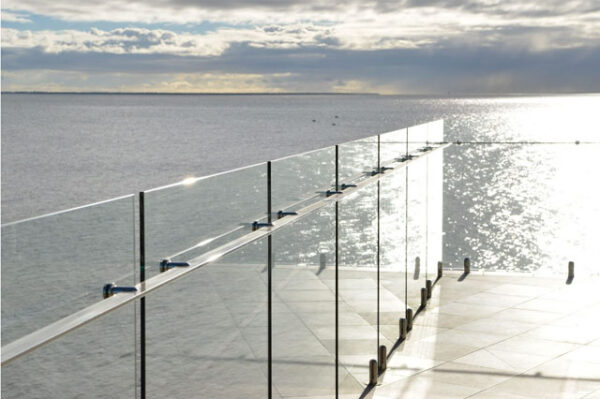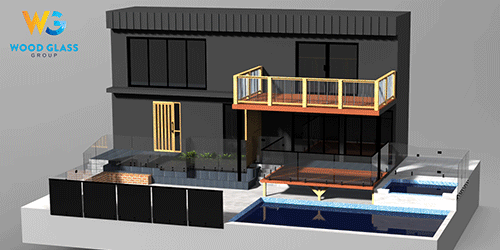
How to Properly Fence and Gate a Pool Area
Do you want to make your pool area safer and more secure? If so, installing proper fencing and gates is one of the best ways. Fencing around a swimming pool provides safety for children or pets and privacy for those seeking extra security. Additionally, local laws may require homeowners to fence off their pools to remain compliant. In this blog post, we'll explore all the details on how to properly fence and gate a pool area safely and efficiently.
A swimming pool can be an excellent addition to any home, providing a refreshing escape on hot summer days and a great place to entertain family and friends. However, pools can also be dangerous, especially for children and pets who may accidentally fall in. That's why it's essential to properly fence and gate your pool area to ensure the safety of everyone who uses your pool. This article will explore critical steps to ensure your pool area is properly fenced and gated to meet all necessary pool safety laws and standards.
Importance of Pool Safety
Pool safety is an essential part of maintaining a healthy and safe environment. Care should be taken to further pool safety inspector ensure that all pool users are appropriately trained in swimming and general safety and that all levels of supervision are in place. Installing fences, childproof locks, pool alarms, covers or nets, and visual barriers around pools is essential to prevent unsupervised and accidental drowning incidents. Furthermore, parents should have life jackets on hand for younger swimmers and educate children about the potential risks of the pool. Ignoring the above steps can have severe repercussions and result in fatal accidents. Therefore, proper pool safety precautions are paramount for preventing injury and injury-related fatalities.
How to Properly Fence and Gate a Pool Area
Properly fencing, pool fences and gating a pool area is essential for maintaining pool safety. Here are the steps to follow to ensure your pool is adequately fenced and gated:
Determine the regulations
Before you start, check your local and state regulations to see if there are any specific requirements for pool fencing and gating. You can find this information online or by contacting your local building or code enforcement department.
Developing a plan for pool fencing and gating is essential to keeping your pool and community safe. Determining what regulations must be followed regarding secure fencing and gating residential and public collections can take time and effort. To make this process easier, take the time to explore the relevant laws and regulations in your area before you begin. Websites accessible through your local building or code enforcement department will have reliable information that can be used to ensure that you are following all requirements. With these guidelines in place, you can confidently protect your pool.
Choose the right fence and gate.
Select a fence and gate that meets the regulations and suits your needs. The wall should be at least four feet high, be non climbable and-resistant, and no more than four inches between each vertical slat. The gate should be self-closing and self-latching, with the latch placed at least 54 inches from the ground.
Choosing the right fence and gate is critical to ensuring proper security and safety on your property. It's essential to make sure that you select a fence and gate set-up that meets regulations and best fits your particular needs. When it comes to fences, make sure they are at least four feet in height, are climb-resistant, and have no more than four inches between each vertical slat. As far as gates are concerned, they should be self-closing and self-latching with the latch placed at least 54 inches from the ground level to ensure maximum security. By considering these considerations, you can ensure that your fence and gate set-up can adequately protect your property for years to come.
Mark the area
Use stakes and string to mark the perimeter of the pool area. This will give you a visual guide for where to place the pool barriers, the fence and gate.
Marking the perimeter of your pool area with stakes and string is an essential step in establishing your fence and gate. It gives you a clear visual representation of where to place these construction materials, ensuring your fence height and gate locations are accurate. The stakes and string create an outline that can be quickly followed when beginning the fencing and gate installation, making this job a breeze.
Prepare the ground
Clear the area where the fence and gate will be installed. Remove any obstacles, rocks, or debris from the ground to ensure a smooth installation of boundary fence.
Before embarking on your fence installation journey, it is essential to prepare the ground properly. This involves clearing any obstacles and debris, such as rocks and other objects, that might impede the installation process. Ensure the area is smooth and free of hindrances to place down your fence and gate easily. Doing this task ahead of time increases the efficiency of your project, saving you both time and effort in completing it.
Install the fence posts.
Set the fence posts in the ground using a post-hole digger or auger. The posts should be at least two feet deep and spaced evenly apart.
Installing fence posts is essential to setting up a strong and visually appealing fencing solution. To start, use a post-hole digger or auger to place the posts at least two feet deep into the ground. Ensuring that each post is evenly spaced for more cohesive-looking construction is essential. Additionally, removing any debris from the soil before beginning installation is beneficial to make the process smoother and more manageable. With careful consideration and effort, a robust and beautiful fence can easily be constructed with the proper set-up of posts.
Attach the fence panels.
Once the fence posts are set, attach the fence panels to the posts using brackets or screws. Make sure the panels are level and secure.
Attaching the fence panels to the posts is essential in setting up a fence. Using brackets or screws, you can quickly secure each of the fence panels until they are level and secure. It is essential to take caution when handling screws - be sure not to overtighten them so your fence can remain durable for years. With just a few well-placed tools, your new wall will soon be ready for you and your family to enjoy.
Install the gate
Attach the gate to the fence posts using hinges. Make sure the gate swings freely and that the latch is working correctly.
Installing the gate to the fence posts is key for a secure and working fence. When attaching the gate with hinges, special attention should be paid to ensure it swings freely. Confirming that the latch works appropriately will ensure the gate remains secure when closed. Thus, it's essential to carefully install the gate for effective use in the long run!
Test the gate
Once the gate is installed, test it to ensure it functions correctly. It should close and latch on its own, and the latch should be out of reach of children.
Testing the gate is a crucial step to ensure it is installed correctly. Ensure the gate closes and latches independently so youngsters can't reach the latch. If the gate does not operate as expected, refer to the installation instructions for further guidance, or contact a professional for assistance. Installing a security gate is an investment in family safety, so make sure all components are tested to protect your loved ones.
Add safety features
To increase pool safety, pool owner should consider adding additional safety features, such as an alarm system or pool cover.
Having a pool offers many benefits, but it is also essential to consider the potential dangers of owning one. Adding safety features such as an alarm system or pool cover is a smart way to maximize safety while enjoying this great feature of your home. An alarm system can alert you if anyone accesses the pool area unexpectedly, and a pool cover can help prevent children from getting in without adult supervision. These simple additions will help keep everyone safe and allow you to enjoy your pool, knowing it is secure.
Regular maintenance
Regularly inspect the fence and gate for any damage or wear and tear. Make necessary repairs or replacements to ensure the wall and gate function properly.
Regular fence and gate maintenance is essential for your property's security, aesthetic appeal, and longevity. You are taking the time to occasionally examine the fence and gate to detect any signs of damage or wear. Ensure you immediately mend even the slightest damage to guarantee that they maintain good condition and continue to fulfil their functions properly. Remember that investing in regular inspections and minor repairs can save you time and money in the long run by preventing more significant issues from arising down the road.
Following these steps ensures that your pool and spa area is properly fenced and gated for maximum safety.
Frequently Asked Questions
What materials are best for pool fencing and gating?
Many materials, including aluminium, steel, vinyl, and wood, can be used for pool fencing and gating. Each material has its benefits and drawbacks, so it's essential to consider factors such as durability, maintenance, and cost when selecting the best material for your pool area.
How high should a pool fence be?
A pool fence should be at least four feet high, as the U.S. Consumer Product Safety Commission (CPSC) recommends. However, some states and local municipalities may have specific height requirements for pool owners, so checking your local regulations is essential.
What type of gate should I use for my pool area?
The gate for the access to your pool area should be self-closing and self-latching, with the latch placed at least 54 inches from the ground. This will help ensure the gate closes and latches securely for every use.
Do I need a permit to install a pool fence or gate?
The need for a permit varies depending on your location and the type of fence pool barrier, or gate you plan to install. It's best to check with your local building or code enforcement department to determine if a permit is required.
How do I maintain my pool fence and gate?
Regular maintenance is essential for ensuring your pool fence and gate remain in good condition. This may include inspecting the wall and gate for damage or wear and tear, regularly cleaning the fence and gate, and making necessary repairs or replacements.
Can I install my pool fence or gate myself?
While it is possible to install a pool fence, barrier, or gate yourself, hiring a professional to ensure that the wall and gate are installed correctly and in compliance with local regulations is generally recommended.
Pool areas are significant for cooling off, gathering with friends and family, and creating lasting memories. Suppose a pool area is in your backyard. In that case, it's essential to be aware of certain regulations and guidelines to get the safety of everyone involved taken care of and aesthetic reasons. The material you choose and the stylishness of the fencing/gate can truly make or break the look of any outdoor area. How you want pool fencing treated or your pool gate is mounted and connected is ultimately up to you. The fence design should match the style of your home's exterior decor and fit into local regulations. As long as you remember that safe installation and materials are the key preventing factor, along with choosing something that looks good outside - it's hard to go wrong! Everyone knows the pool season will come and pass before we know it - feel free to share suggestions, tips, or experiences when properly fencing your pool area! Let us know in the comment area below!


